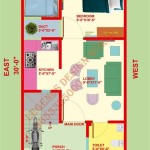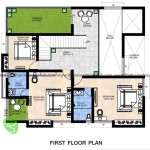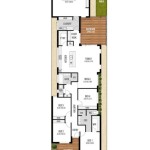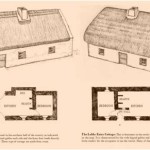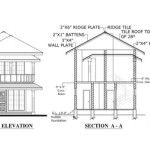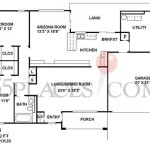Roman Style House Floor Plans: Unveiling the Intricacies of Ancient Architecture
The grandeur and architectural ingenuity of ancient Rome continue to fascinate scholars and architects alike. Roman style house floor plans, in particular, embody the principles of functionality, aesthetics, and societal hierarchy that characterized this influential era.
Roman houses, known as "domus," were typically designed around a central courtyard, or atrium. This open space served as the heart of the home, providing natural light and ventilation while facilitating the movement of air and water. The atrium was often flanked by colonnades and surrounded by living quarters, including bedrooms, dining rooms, and a kitchen.
Wealthy Roman citizens typically owned large and elaborate domus with multiple courtyards, reception rooms, and private baths. These luxurious homes often featured intricate mosaic floors, frescoed walls, and marble columns. The size and opulence of a domus reflected the social status and wealth of its owner.
Beyond the atrium, Roman house floor plans typically included the following key spaces:
- Tablinum: A formal reception room where the master of the house conducted business and received guests.
- Triclinium: A dining room with three raised platforms where guests reclined on couches while dining.
- Cubicula: Bedrooms, which were typically small and windowless.
- Culinae: Kitchens, which were often located at the back of the house and poorly ventilated.
- Latrinae: Public or private toilets, which were often shared by multiple households.
Roman house floor plans also incorporated functional areas such as storerooms, stables, and gardens. These spaces were essential for daily life, providing storage, transportation, and a source of fresh produce.
The layout of Roman houses was not only functional but also symbolic. The atrium, with its central impluvium (a shallow basin for collecting rainwater), represented the domestic hearth and the sacred space of the household gods. The arrangement of rooms around the atrium reflected the hierarchical structure of Roman society, with the most important rooms, such as the tablinum and triclinium, located closest to the atrium.
In conclusion, Roman style house floor plans are a testament to the architectural ingenuity and societal values of ancient Rome. By understanding the key elements and functional aspects of these plans, we gain a deeper appreciation for the complexities of Roman domestic architecture.

25 Roman House Ideas Courtyard How To Plan

Roman Domestic Architecture Domus Article Khan Academy

Courtyard House Plans Family Floor

Floor Plan Of A Typical Roman Atrium House Scientific Diagram

Roman House

Traditional Style House Plan 3 Beds 2 5 Baths 2759 Sq Ft 472 172 Floorplans Com

Ancient Roman Villa Floor Plan Student Handouts

View Page Roman Atrium Style Housing

Yes Finally Found The U Shape House I Want Just Need To Change Outside Elevation Courtyard Plans Shaped Contemporary

Plan 052h 0031 The House

